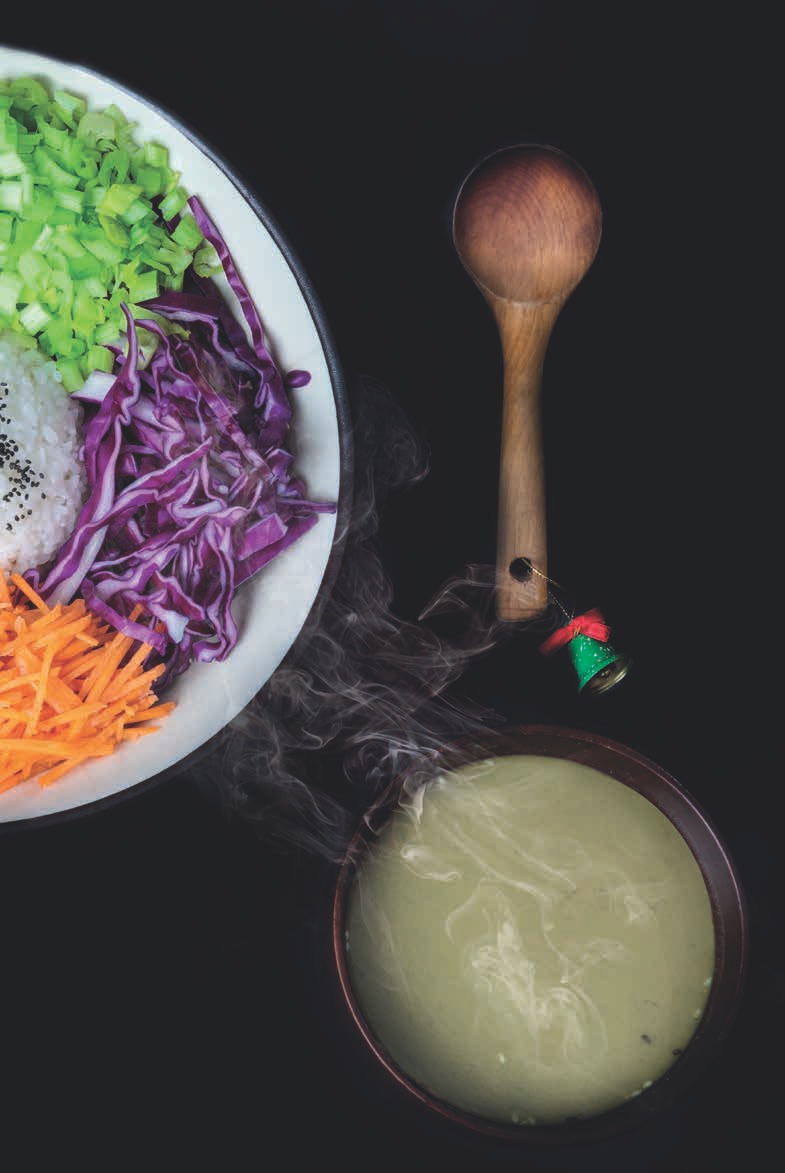
 |
|
As many of you know, our Center, Tea Sage Hut, is located in Miaoli, a small town in northern Taiwan, which is home to one of the largest concentrations of Hakka people in the world. Hakka (客家) are actually Han Chinese, mostly from Guangdong and Fujian. Their legends say that they come from the Yellow River Valley originally, but Hakka people have been rather nomadic for many centuries, migrating throughout China and abroad. They are actually the largest diaspora of Chinese people in the world, settling in Hong Kong, Malaysia, Taiwan, Singapore and the West. Traveling the world, they came to call themselves "Hakka," which literally translates to "guest families," even after they've stayed in one place a long time, like Miaoli and Hsinchu.
The Hakka language and culture is rich in history. They were one of the first groups of Chinese to migrate to Taiwan, coming in waves at the end of the Ming Dynasty (1368 - 1644) and then throughout the Qing Dynasty (1644 - 1911), as well. Today, they make up almost twenty percent of Taiwanese people, the second-largest ethnicity. They were the first agriculturalists in Taiwan, as the aboriginals were hunters and gatherers. They settled in Miaoli and Hsinchu at that time because land was wild and free for settlers.
Hakka people are one of the reasons that Wu De chose Miaoli as home, and why the Center was built here. They are very hospitable, kind and simple people, with a history of farming, a love of the Earth and each other. They truly treat guests with sacred hospitality, which is the spirit of tea and our Center.
Amazingly, one of the most common dishes that Hakka people serve to guests includes tea; it's called "lei cha (擂茶)." Lei cha, which translates to "ground tea," or "pounded tea," is probably our favorite tea-inspired dish, because it allows for so much room to adapt and make it in the way that suits the occasion. There are as many recipes for lei cha as there are Hakka households. Each home and restaurant has their own blend for the powder that forms the basis of the dish. Most Hakka restaurants and homes will serve you a bowl of warm lei cha when you arrive, especially in the winter. Additionally, you can also make lei cha into a meal by pouring it over a variegated collection of veggies and rice. Amongst all the recipes that include tea, lei cha tastes and feels the most like tea. As you will see, you consume the whole leaf, so the flavor is strong. And since it was created by one of the most hospitable cultures in the world, people who understand how to be "guest families," as well as how to treat their guests, it is very much in the spirit of tea. If you are going to make any tea-related dish, this one is the most fun and brings warmth to a nice day of hosting guests for tea!
Aside from Hakka people, Hunanese also prepare lei cha to welcome their guests. The recipes in Hunan are much the same as in Taiwan.
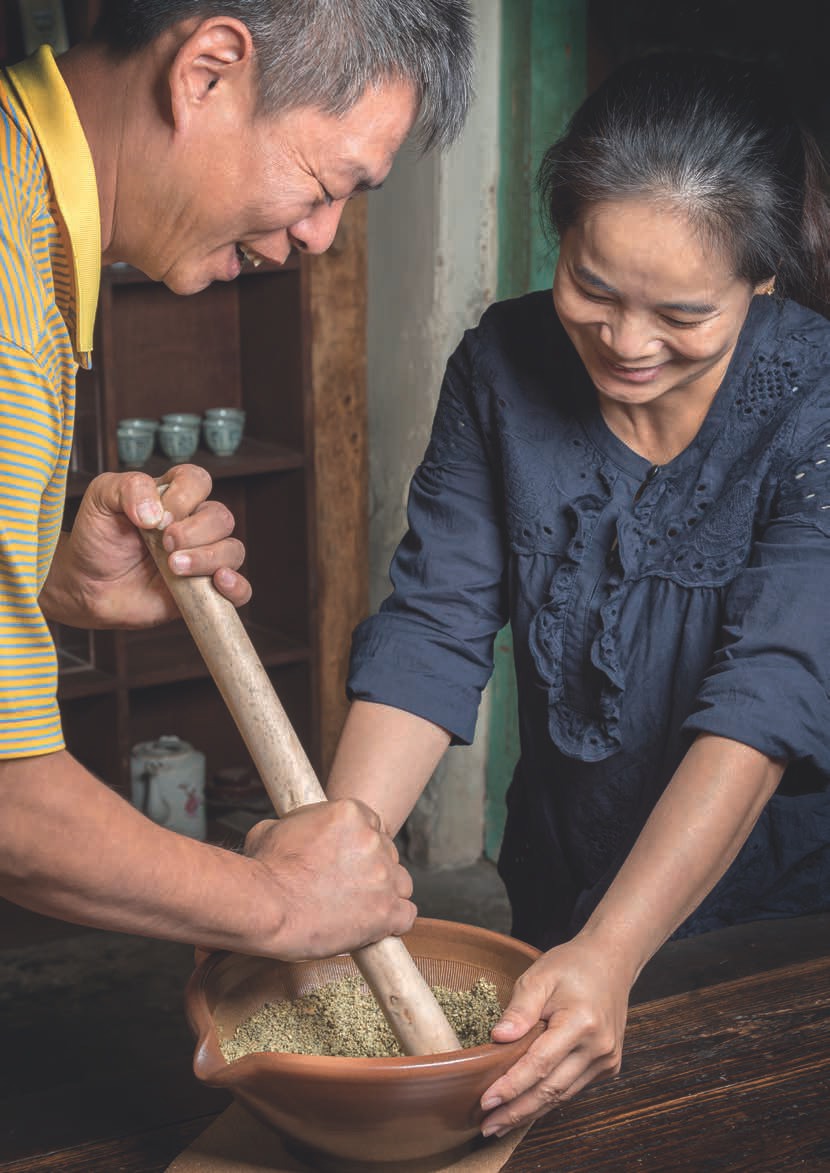
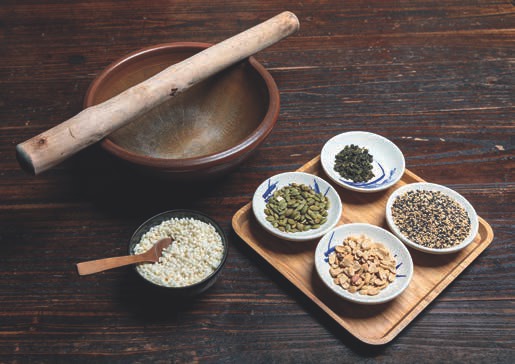

The powder is the part where you have the most freedom. Traditionally, the lei cha powder is a combination of tea, roasted peanuts and sesame. Many restaurants, vendors and Hakka making lei cha at home will add other kinds of beans and nuts as well. Some of the people selling bags of lei cha in the traditional Hakka town of Beipu boast up to thirty different ingredients in their powder, including meng, black and red beans, lotus seeds, etc. The best lei cha is ground by hand in a large mortar and pestle, but you could use a mechanized grinder as well. You can also use all different kinds of tea leaves. We have found that nice shou, dian hong or roasted oolongs, like Yancha, do very nicely. The traditional lei cha is powdered green tea, which we have included as your gift this month, so all you will have to do is grind some nuts and beans to add to the tea to make your very own special bowl of lei cha at home!
Start with almonds or peanuts, maybe some sesame and add any other dry nuts or beans you want. Try to keep the tea to at least one-third of the mixture so that the tea flavor will stay pronounced. If you have some fine-quality, organic matcha, you could add a tablespoon of that as well. At this point, you can also decide whether or not you want to make your lei cha sweet or savory, and as a drink alone or as a meal with veggies and/or rice. Sweet lei cha can also be poured over plain rice, but you'll miss out on all the veggie goodness if you make that choice. You can sweeten the powder with any sweetener that is dry, including non-refined sugar or dried fruit.
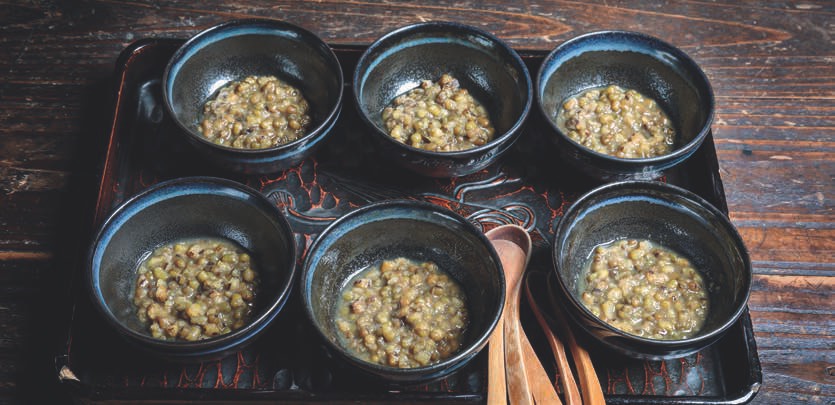
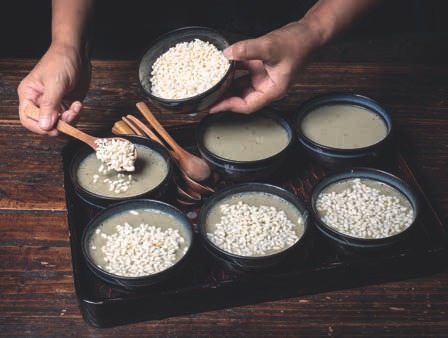
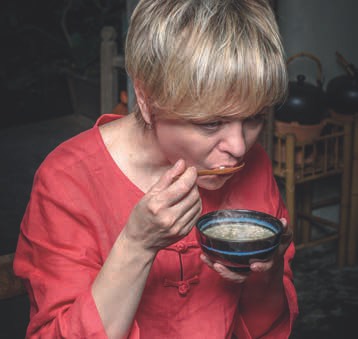
Making lei cha as a drink is the easiest way to prepare this traditional hospitality recipe. Just add the toasted nuts, beans and seeds to your tea power and grind it into a paste. In Hakka households, they will boil some red beans or, more often, meng beans in water with some dark brown sugar. (You can use any sweetener for this, including fruit.) When the beans are soft, they scoop them out into bowls. The soft beans have absorbed the sweetener. Then, you pour the lei cha over the beans into the bowls. Most often, Hakka people will then add a spoonful or two of puffed rice to the lei cha, to give it a nice crunch. You drink from the bowl and use a wooden spoon to eat the beans and puffed rice. This is the simplest kind of lei cha, served whenever you arrive at a Hakka home.
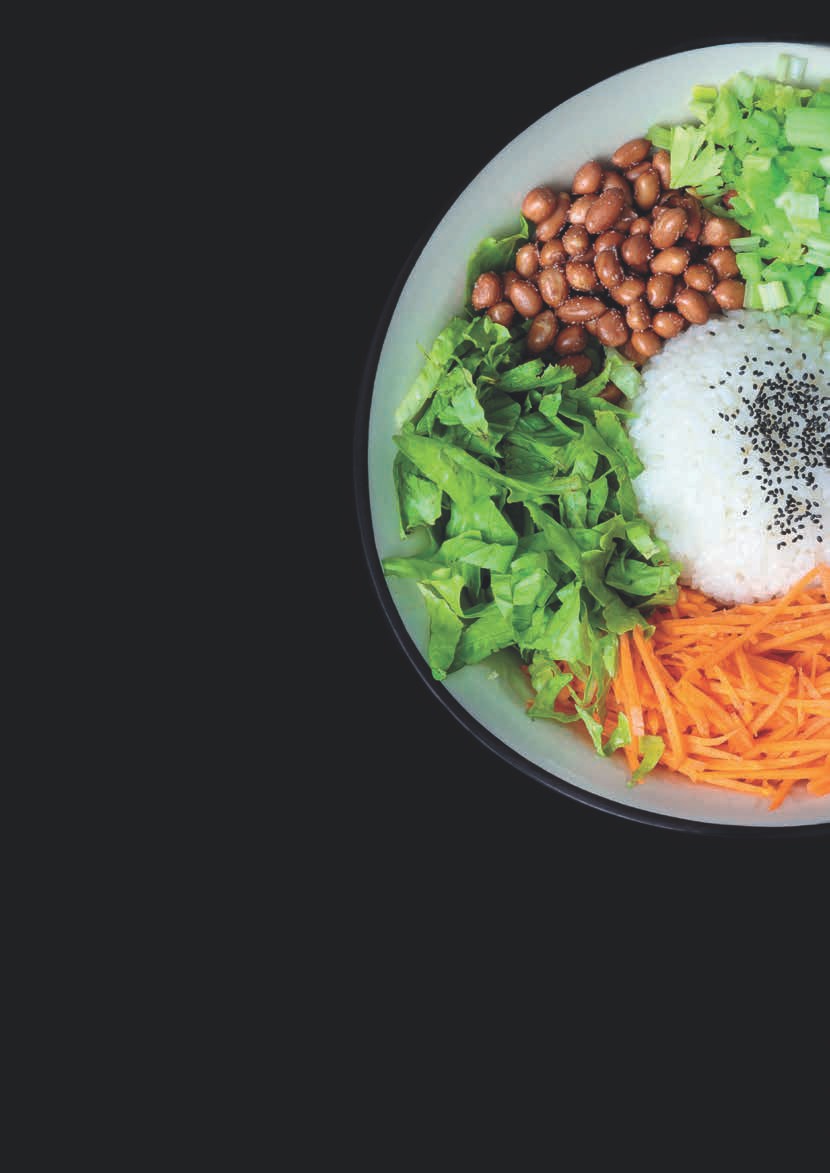
Veggies
As with the powder for lei cha, you have a lot of creative freedom with veggies when preparing lei cha as a dish. In restaurants, the veggies are usually served in little individual dishes with a bigger dish of rice in the middle, but Hakka people usually just organize the different veggies around the rice in one bowl at home, which is simpler. The reason restaurants serve them separately is so the crisp, raw veggies don't get soggy in the lei cha, allowing your guests to add them as they go. The rice is cooked, of course, but the veggies are all raw and chopped. The traditional veggies served in most restaurants and households are carrots, celery, peanuts, some tempeh or tofu (cooked), sprouts, long beans and some shredded lettuce. Feel free to use any combination of these vegetables, or add any others that you currently have fresh to your lei cha. Usually, people will sprinkle some black and/or white sesame seeds over the center of the rice.
Directions
Cook the rice in a pot until it is soft and fluffy. Serve in a low, flat bowl. Sprinkle some sesame seeds on top. Either place the raw veggies and nuts around the rice in the same bowl or serve them in little dishes, perhaps on a tray. Boil some water and mix in your tea powder. Alternatively, you can add the powder to a bowl and then pour water over it, whisking it like matcha. You want the lei cha to be very hot and thick. It should have the consistency of a thick, green smoothie (unless you are using another tea besides the green tea we have provided you with). Serve the tea in a bowl along side the dish, or dishes, of rice and veggies. It is preferable to use a bowl with a spout, but it is not necessary.
The dish will become like a green gruel as the tea, ground nuts, beans and the fresh, raw veggies all mix in a wonderful way. The lei cha soaks into the rice and cooks the veggies. This easy dish is always a hit for tea people, and carries with it the hospitality of the Center and the Hakka!
